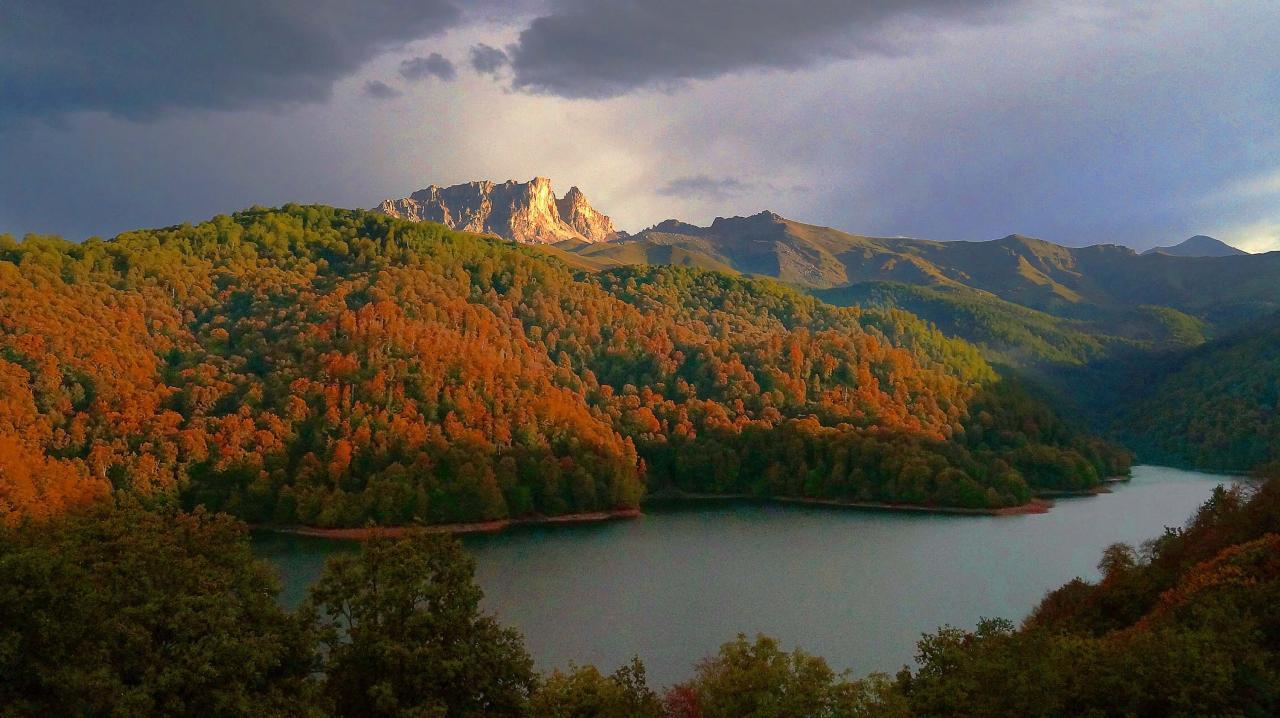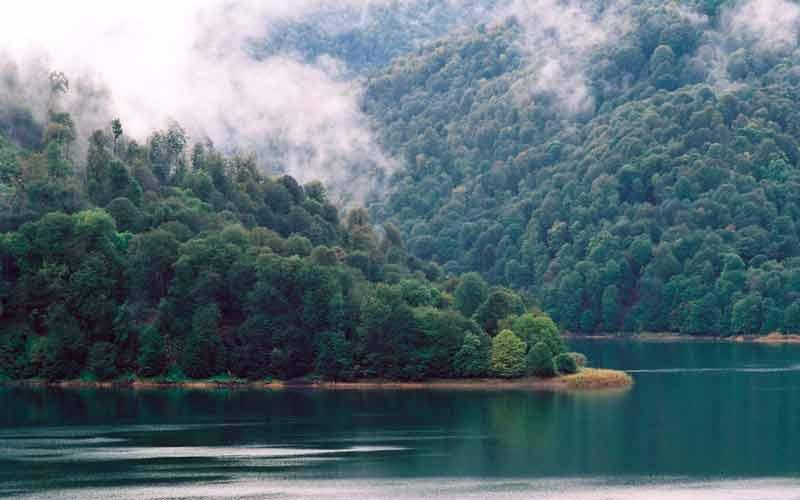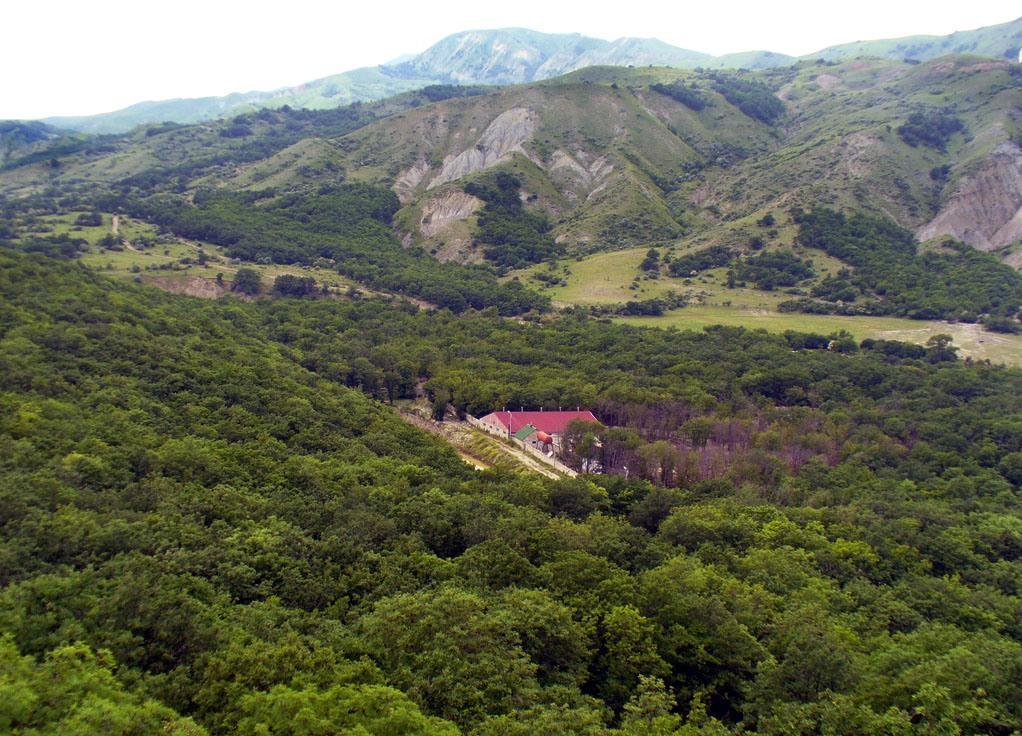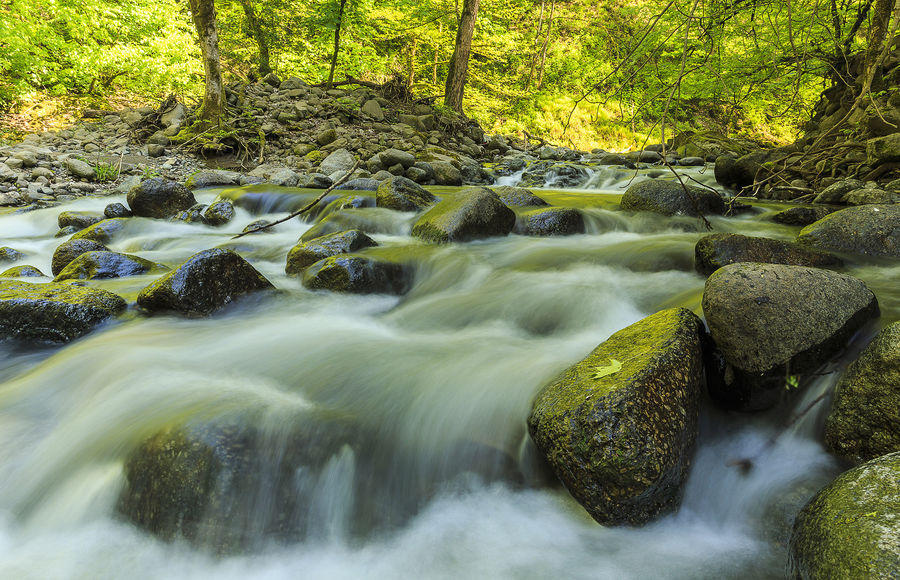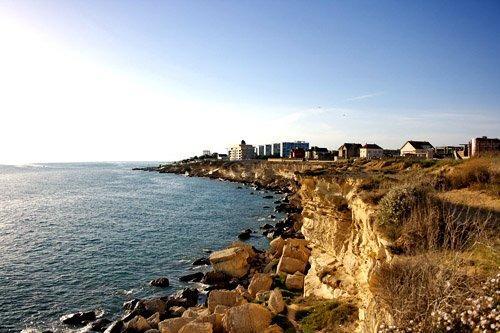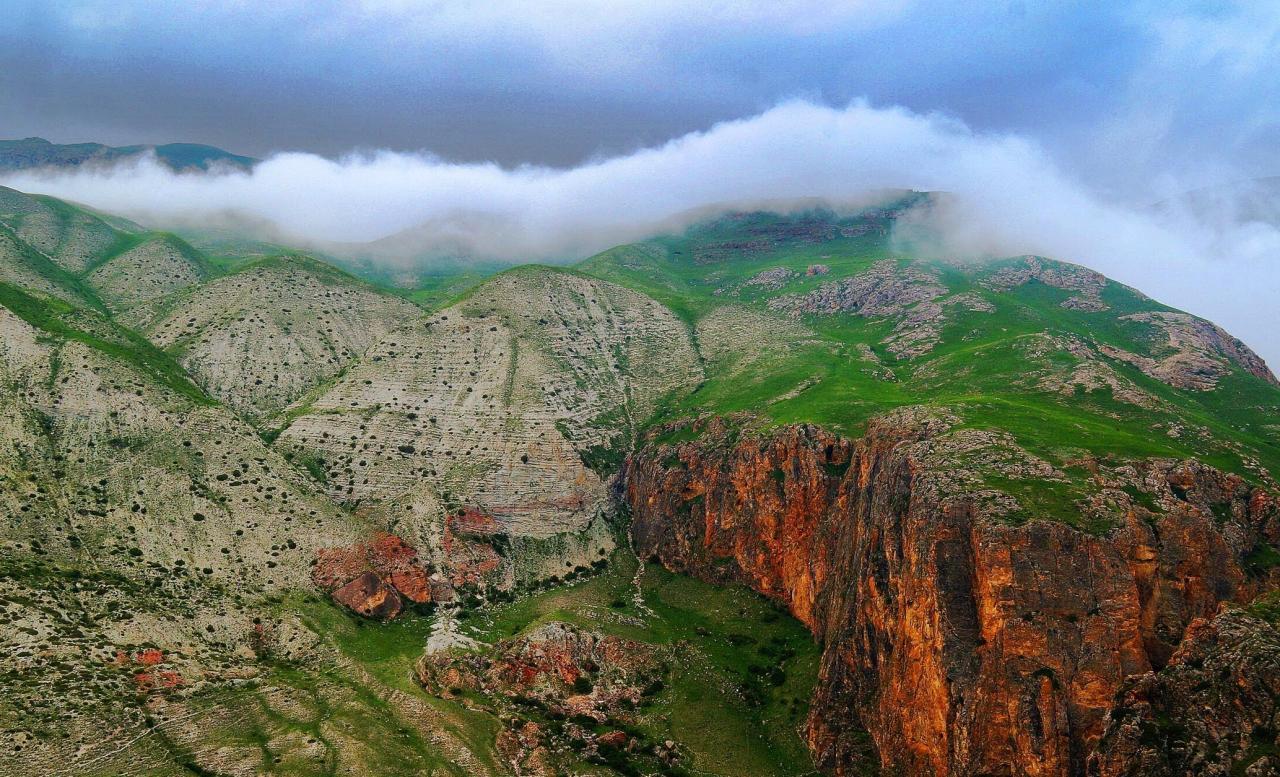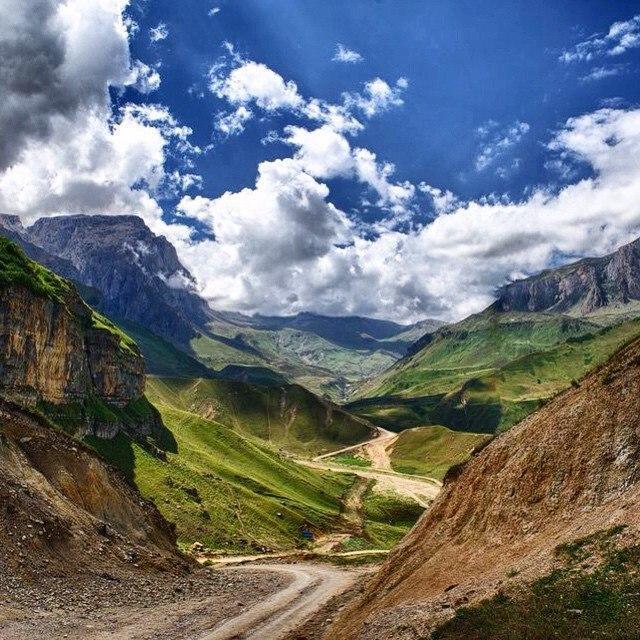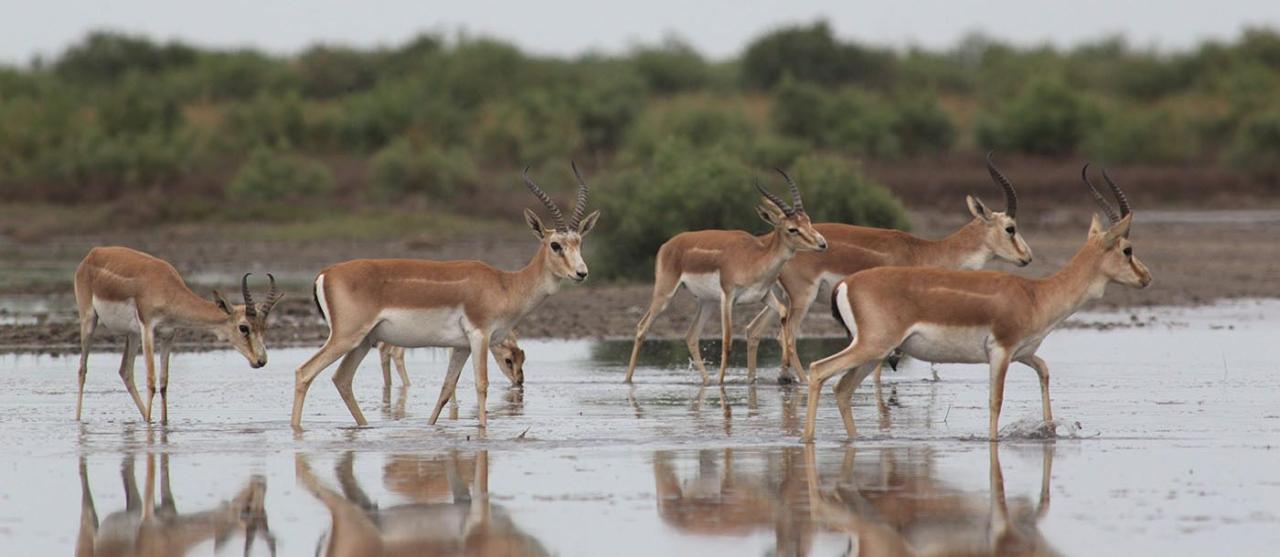Nine must-visit national parks in Azerbaijan [PHOTO]
![Nine must-visit national parks in Azerbaijan [PHOTO]](https://www.azernews.az/media/2018/01/22/aggel.jpg)
By Laman Ismayilova
The Land of Fire is packed with dramatic natural sights, some a little more remarkable than others.
With the key task of ensuring biodiversity, the national parks give people a great opportunity to enjoy nature in all its beauty.
The country’s nine national parks, 11 state parks and 24 state reserves, are home to a wide variety of wildlife including eagles, gazelles, bears, wolves, deer, and wild boar.
Total protected areas amount to 10.3 percent of Azerbaijan’s land mass, including 3.7 percent of national parks.
For those who are lovers of amazing landscapes and brilliant nature formation definitely should visit some of these parks.
Gobustan State Historical-ArtisticReserve
Settled since the 8th millennium BC, the area contains more than 600,000 distinct paintings, going as far back as 20,000 years to as recent as 5,000 years ago.
The reserve attracts not only local scientists but also by foreign archaeologists. The State Historical-Artistic Reserve has been functioning since 1967. In 2007, the reserve was included in the UNESCO list of World Cultural Heritage.
There are approximately 6,000 drawings in Gobustan – petroglyphes - stone and iron-age figures carved thousands of years ago and now considered a UNESCO World Heritage Site. The pictures dating back to 8 millenniums reflect different hunting scenes, ceremonial and ritual processes of the habitants of these places.
Gobustan petroglyphs were repeatedly investigated by the famous Norwegian explorer and adventurer Thor Heyerdahl, who recognized local boats petroglyphs as the oldest known images of pirogue in the world.
These vessels, similar to the old Scandinavian ships, prompted him to make sensational hypothesis statement about the connection between Norwegians and Azerbaijanis.
Thor Heyerdahl concluded that the ancestors of the Scandinavians were the migrants from Azerbaijan region.
Most of the rock engravings depict primitive men, animals, battle-pieces, ritual dances, bullfights, boats with armed oarsmen, warriors with lances in their hands, camel caravans, pictures of sun and stars.
Apart from petroglyphs, there is also this musical gemstone known as Gaval Dash. It makes a tambourine-like sound when it is hit in different points.
Another interesting touristy spot is a stone slab with a Latin inscription dated by the first century. The stone lab was left here by 12th Roman legion of the Emperor Domitian, which indicates that legion had stayed here.
Absheron National Park
Absheron National Park is a great place for all those fascinated by nature.
Established in the basis of Absheron State Nature Sanctuary, the national park stretches 783 ha area of administrative territory of Baku city.
The National Park is situated in the south-eastern end of Absheron peninsula in the Shah Dili territory.
More than 50 bird and animal species are encountered in Absheron National Park.
Gazelle, jackal, fox, rabbit, badger, Caspian seal, birds such as silver gull, wheezing swan, grey and red-headed black, white-eyed black ducks, big white bittern, sandpiper, bald-coot and other migrant birds have inhabited here.
Caspian seal which is considered rare species is encountered in the Caspian sea area of Absheron National Park, It is observed in seal cape mostly in May-August.
Notably, Caspian seal is included into the Guinness Book Records as the smallest seal in the World Ocean.
Nearly 25 plant species exist in the National Park. Some 17 species as well as one grown species of wormwood is encountered in Azerbaijan.
Wormwood (Artemisia absinthium) is a herbaceous, perennial plant with fibrous roots. It is commonly used for flavouring in some alcohol beverages.
Goygol National Park
Anyone visiting the Land of Fire should enjoy the magnificent views at Goygol National Park.
Cold climate with dry winter prevails in the area. Annual temperature of the weather wavers between 4-10 degrees C. Annual precipitation is 600-900 mm.
It includes one of the most beautiful and cleanest lakes in Azerbaijan- Goygol.
The lake gets its name from its deep blue-colored water. It was formed in 1939 as a result of earthquake occurred in Ganja. Kapaz mountain was tumbled down, blocked up the Aghsuchay river.
The water in lake is always cold even in August does not rise above + 17 ˚C.
More than 423 types of trees, shrubs and medicinal plants grow here. In the surrounding forests you can meet wolves, foxes, deer, jackals, bears, lynx and many other animals. The lake area is ideal for walking, traveling, and family picnics. Recreation on the shore of the fresh lake is the best decision on hot days.
Shahdag National Park
The Shahdag National Park covers a territory of 115,895 ha, including five regions of the country. The Park was established in December 2006 to preserver mountain forests and pasture ecosystems located in high mountainous areas.
The height of the National Park territory is the main reason behind its climatic diversity, fertility of flora and richness of animal life. The landscape of the territory is fantastic and the mountains attract not only tourists, but also sportsmen to the highest peaks of the country, Bazarduzu Mountain of 4,466 meters above sea level.
The major types of trees are Caucasian Oak, Caucasian, European Hornbeam, Oriental Hornbeam, Oriental Beech, Silver Birch, Birch, Common Yew, White Willow, Common Walnut, Wild Cherry etc.
The national park is home to the rare East Caucasian tur, a mountain dwelling goat antelope found only in the eastern half of the Caucasus Mountains. Other large mammals found here are the Caucasian, Bezoar ibex, domestic goat, Caucasian lynx, Syrian brown bear, wild boar, Indian wolf, common jackal, common jungle cat, red fox, roe deer and others.
Zangazur National Park
Zangazur National Park was in 2009 on the base of Ordubad National Park in Nakhchivan Autonomous Republic. It was named after Academician Hasan Aliyev who is considered as a founder of ecology in Azerbaijan.
Furthermore, Nakhchivan is known to have 62 mammal species and subspecies. Some 32 of them such as blazilius horseshoe bat, southern horseshoe bat, porcupine, manul, bezoar goat and Caucasian muflon occur in the Zangazur National Park.
Moreover, approximately 12 carnivorous mammals such as leopard, wolf, jackal, fox, stripped hyena, badger, wild cat and other predators represent the major part of the fauna in the park.
In addition to mammals, 217 bird species and subspecies such as Levant sparrowhawk, great white pelican, Dalmatian pelican, white-tailed eagle, lammergeyer, short-toed eagle, great bustard and little bustard can be found in Nakhchivan. Notably, 15 of those species were added to the Red Book.
Zangazur National Park is also rich in rare plants. About 77 plants, including Iris elegantissima, Himantoglossum formosum, Dorema glabrum and other plants can be found here.
Altiagach National Park
Altiagach is mostly covered by temperate deciduous broadleaved forests. The major types of trees are Persian Ironwood (Parrotia persica), Caucasian Oak (Quercus macranthera), Caucasian Ash (Fraxinus angustifolia subsp. oxycarpa), European Hornbeam (Carpinus betulus), Oriental Hornbeam (Carpinus orientalis), Oriental Beech (Fagus orientalis), Silver Birch (Betula pendula), White Birch (Betula pubescens), etc.
Established in 2004, the national park is home to the rare East Caucasian tur (Capra cylindricornis), a mountain dwelling goat antelope found only in the eastern half of the Caucasus Mountains. Other large mammals found here are the lynx (Lynx lynx), brown bear (Ursus arctos), wild boar (Sus scrofa), wolf (Canis lupus), golden jackal (Canis aureus), jungle cat (Felis chaus), red fox (Vulpes vulpes), roe deer (Capreolus capreolus), badger (Meles meles), and otter (Lutra lutra), etc.
Hirkan National Park
Hirkan National Park is located on the shores of the Caspian Sea in the southeast of Azerbaijan. The national park was established in 2004.
Its mission is to ensure the conservation of relict and endemic plant species of the Tertiary period, the protection of typical flora and fauna representatives of this area listed in the Red Data Book of the Republic of Azerbaijan, the implementation ofenvironmental monitoring, public environmental education as well as creating conditions for research, tourism and recreation.
The park is rich in plant species. The vegetation cover is mainly represented by trees and shrubs that form forests here.
Forests in the lower part predominantly comprise chestnut-leaved oak, ironwood and hornbeam together with black locust, Hirkan fig, Caucasian persimmon, etc.
Of 435 tree and shrub species occurring in Azerbaijan 150 ones grow in the Hirkan forests.
Front-Asian leopard, lynx, wild cat, badger, wild boar, roe deer, sika deer, raccoon are found among. Front-Asian leopard, protected under the Red Data Book of Azerbaijan and IUCN list can be found here.
The Red-listed species also include Talish longhorn beetle, Talish ground beetle, speckled wood, Talish orangetip butterfly, Caspian parandra, brahmid moth and other insects.
Hirkan National Park numbers over 118 bird species, 16 of which, including black stork, osprey, Northern goshawk, imperial eagle, Talish Caucasian pheasant, black francolin are listed in the Red Data Book of Azerbaijan.
Ag-Gol National Park
Ag-Gol National Park was established in 2003 for the preservation of migrating routes, areas of wintering and nesting of waterfowl and wader birds, as well as for breeding of commercial fish species.
The area of 4400 hectares covers the water area of lake Aggyol.
One of the most beautiful lakes in Azerbaijan is located on the territory of Agjabadi and Beylagan regions. This lake is inhabited by many species of birds included in the Red Book of the International Union for Conservation of Nature and the Red Book of the Republic of Azerbaijan.
These are lesser white-fronted goose, white-headed duck, marbled duck, ferruginous duck, little bustard, little comorant, as well as flamingoes, pelicans, all 7 species of herons and a variety of species of ducks, geese, rails, waders and others. Wolf, jackal, fox, hare, the reed beds and a lot of bats are found here.
Shirvan National Park
Established 2003, Shirvan National Parkwas created with a view to the conservation of foremost components of a semi-desert landscape, the protection of goitred gazelles listed in the “Red Data Book” of Azerbaijan and species of fauna that are typical to this territory. Its functions also envision the implementation of environmental monitoring, public environmental education, as well as creating conditions for tourism and recreation.
A chain of hills is the main terrain that developed as a result of the wind’s work and serves as an excellent refuge and shelter for gazelles.
Gazelle is considered lesser spread species in the world among mammals fauna. In this regard it exists mostly in Azerbaijan, Front, Middle and Central Asia. The territory of Azerbaijan is considered the main existence area of gazelles.
---
Laman Ismayilova is AzerNews’ staff journalist, follow her on Twitter: @Lam_Ismayilova
Follow us on Twitter @AzerNewsAz
Here we are to serve you with news right now. It does not cost much, but worth your attention.
Choose to support open, independent, quality journalism and subscribe on a monthly basis.
By subscribing to our online newspaper, you can have full digital access to all news, analysis, and much more.
You can also follow AzerNEWS on Twitter @AzerNewsAz or Facebook @AzerNewsNewspaper
Thank you!

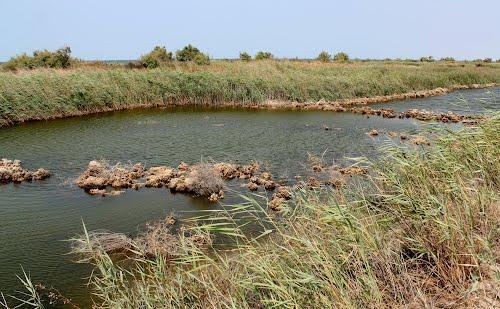
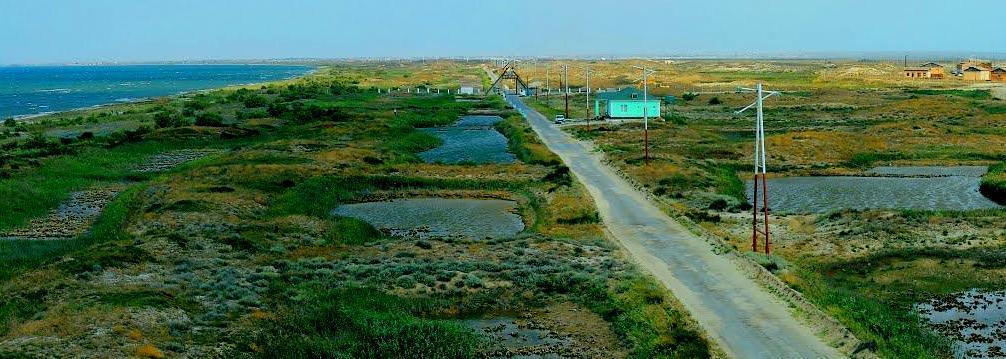
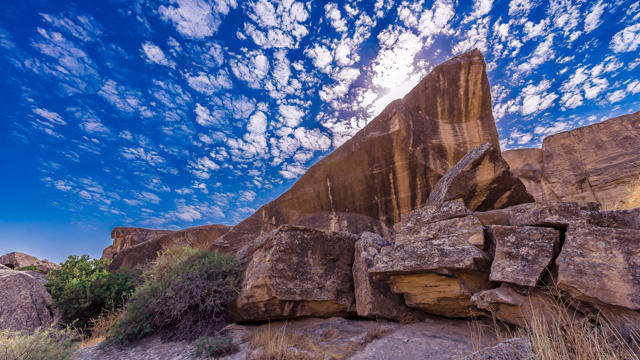
.jpg)
.jpg)
